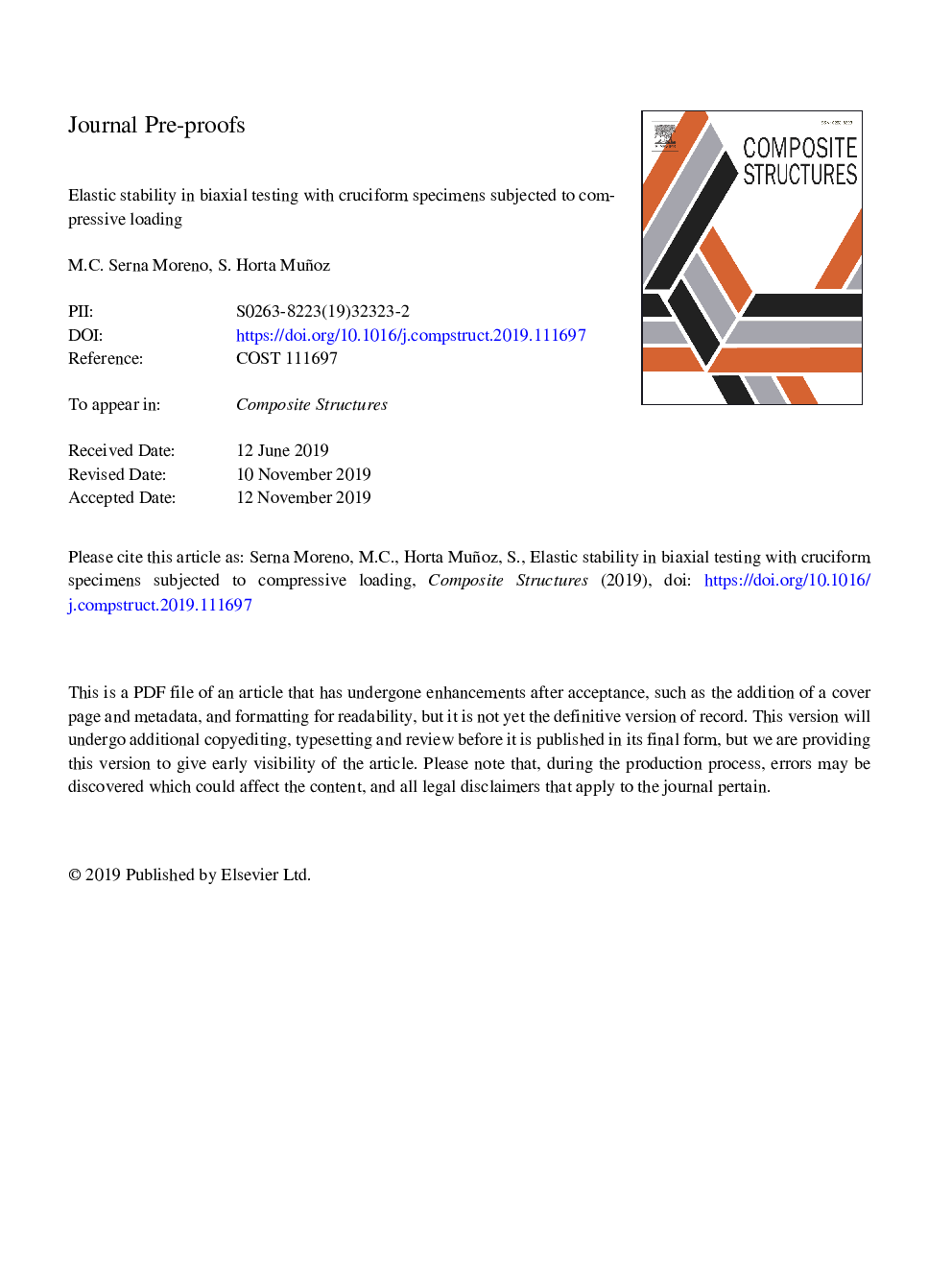| Article ID | Journal | Published Year | Pages | File Type |
|---|---|---|---|---|
| 13419229 | Composite Structures | 2020 | 29 Pages |
Abstract
This work presents the main aspects that should be taken into account to design biaxial experiments with cruciform specimens in the presence of compressive loading, applied on the arms of the sample by means of compression plates. The global buckling of the cruciform specimen and the local instability of the rectangular-shaped central region submitted to biaxial loading are described numerically and analytically. The analytical expressions are derived using the buckling effective lengths technique for calculating the bifurcation stress in simply supported and clamped rectangular thin-plates made of isotropic materials and ±45° angle-ply CFRP laminates. Furthermore, the influence of the arms-to-centre thickness-ratio on the compressive load that destabilises the cruciform geometry is reviewed numerically. Finally, the use of an anti-buckling device is numerically proved to reduce the risk of instabilities and to assure more reliable results. The device consists of a cross-shaped fixture that constrains the out-of-plane displacements and an optional L-shaped support in order to force the alignment of the fixture, the sample and the testing machine.
Related Topics
Physical Sciences and Engineering
Engineering
Civil and Structural Engineering
Authors
M.C. Serna Moreno, S. Horta Muñoz,
